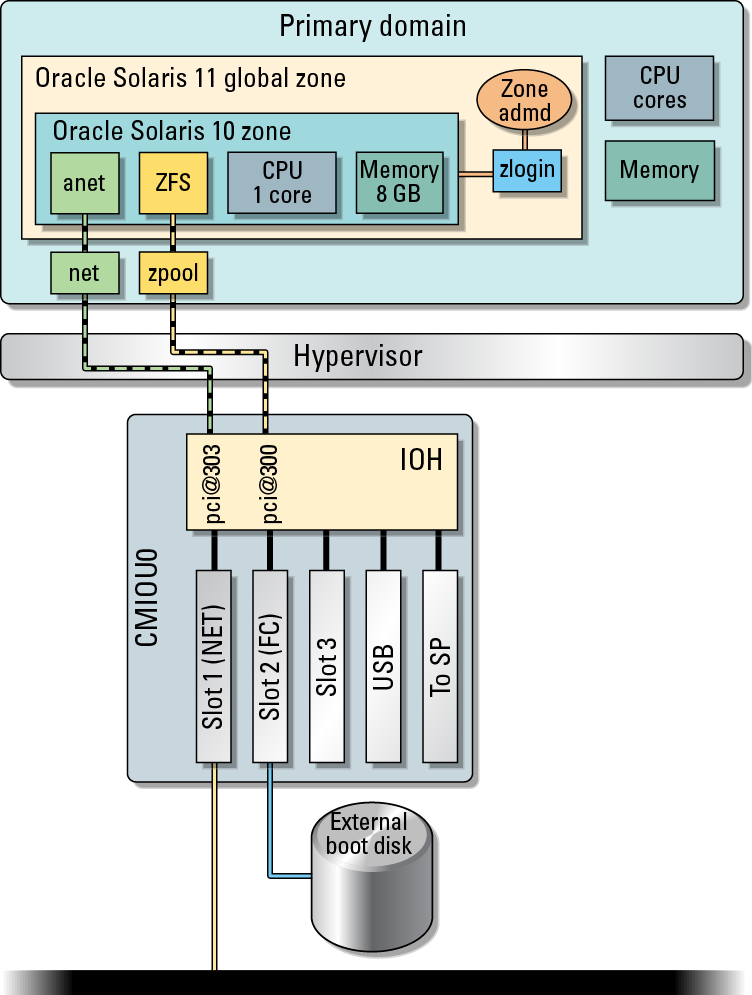Bare Metal Plus Zones Configuration
This example depicts bare metal with Oracle Solaris Zones only. Oracle VM Server for SPARC is not used.
Oracle Solaris Zones is a highly flexible virtualization technology provided in Oracle Solaris. The Oracle Solaris Zones partitioning technology is used to virtually divide the resources of a physical machine and its Oracle Solaris operating system to simulate multiple machines and operating systems to provide an isolated and secure environment for running applications.
Oracle Solaris Zones provides several types of zones. The instance of the operating system that is running directly on a bare metal server or in a logical domain is called the global zone. An instance of a virtual system running inside the global zone is called a non-global zone, or simply a zone. By default, a non-global zone runs the same Oracle Solaris 11.3 OS as the global zone and is referred to as a native zone, A feature called branded zones enables you to create zones that are capable of running Oracle Solaris 10 as well.
A kernel zone is a non-global zone that runs a kernel and operating system that is separate from the global zone. The separate kernel and OS installation in a kernel zone provide for greater independence and enhanced security of operating system instances and applications. Oracle Solaris Kernel Zones do not need to run the same version of the OS as the global zone. A kernel zone can run an Oracle Solaris release, Support Repository Update (SRU), or kernel version that is different from that of the host system. The Oracle Solaris release in a kernel zone must be at least Oracle Solaris 11.2 however. A kernel zone can run non-global zones inside it, acting as the global zone to those zones inside.
See the Introduction to Oracle Solaris Zones in the Oracle Solaris 11.3 documentation for more information about zones.
A bare-metal configuration, with or without zones, resembles the traditional server model of having one large instance of the OS running on the server. This configuration provides these features:
-
Acts like a traditional OS partitioning model that is supported on sun4u and sun4v architectures.
-
Ensures that the hypervisor is transparent to the zones.
-
Enables the administration daemons running in the global zone to manage the non-global zones .
-
Supports Oracle Solaris 10 branded zones and Oracle Solaris 11 native zones and kernel zones.
-
Provides very low-overhead, fine-grain resource management, and high scalability.
Basic Layout of Bare Metal Plus Zones Configuration shows the basic layout of the bare-metal configuration in the primary domain. You can also use non-primary domains to increase the number of similar configurations on the same server. The non-primary root domains would depend on the primary domain for virtual console services. The total number of possible non-primary root domains depends on the number of available root complexes and CPU cores, the amount of available memory, and especially, the requirements of the workload in each domain.
Figure 5 Basic Layout of Bare Metal Plus Zones Configuration
